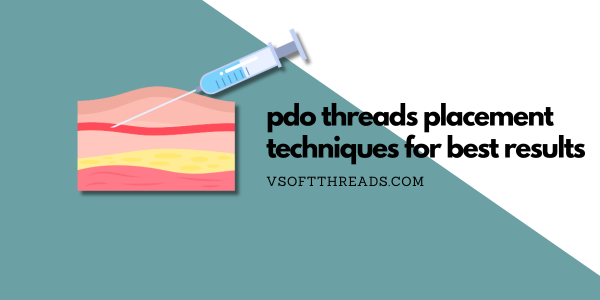
PDO threads are among the leading minimally-invasive anti-aging treatments on the market today. They provide patients with a viable alternative to surgical procedures such as a rhinoplasty, facelift and more.
With this great procedures, patients can address a number of concerns in their face — whether it be sagging skin, lack of definition, wrinkles or some other sign of aging. Not only does the procedure not require surgery and, as a result, general anesthesia, but it’s typically done in about an hour, with little to no downtime and recovery time.
As a synthetic polymer that’s 100% biocompatible and biodegradable, there are very low risks associated with PDO threads procedures, and the body will break them down naturally over time, without the need to ever remove them.
While results aren’t permanent, the procedure can be repeated at any time to achieve the desired results.
With PDO threads becoming so popular today, it’s important for patients to visit a practitioner who is experienced, reputable, uses high-quality PDO threads and knows how to use them.
In this article, we’ll discuss PDO threads placement techniques for best results.
For any PDO threads procedure, a consultation with the patient must be done first. This helps the practitioner understand exactly what it is that the patient desires, so that they can decide which type(s) of threads they would use.
Table of Contents
Add a header to begin generating the table of contents
 Medically reviewed by: Elizabeth Williams RN
Medically reviewed by: Elizabeth Williams RN
Updated: 2/20/2025
The first question a practitioner must ask is what type of PDO threads they will be using in the procedure. Of course, that depends on what the patient is looking to get done.
There are two main types of PDO threads …
Any of these types of PDO threads can be used by themselves or in conjunction with each other, depending on the results that are desired.
For any PDO threads procedure, a consultation with the patient must be done first. This helps the practitioner understand exactly what it is that the patient desires, so that they can decide which type(s) of threads they would use.
The practitioner should then conduct an assessment of the patient’s skin to look at the areas that they’re concerned with, as well as to evaluate the type of skin the patient has as well as the condition.
They should then explain to the patient what they recommend for the desired results, what’s involved in the process, and then get their informed consent before they proceed any further.
Once a plan of action has been determined, the practitioner should outline the specific areas on the patient’s face where they will be inserting the PDO threads. This will give them a blueprint, in essence, for what needs to be done based on the patient’s wishes.
The practitioner should then apply a local anesthetic or topic anesthetic to the area so that the patient is completely comfortable before the procedure begins. This will numb the area so that there is only minimal discomfort while the procedure is going on.
While the numbing agents are taking effect, the practitioner should be preparing the PDO threads. This includes examining them to ensure that they’re sterile as well as of the right type and length for what’s being treated.
Using a preloaded cannula, the practitioner will then insert the PDO threads into the patient’s skin at a specific angle and depth. This will depend on what the patient is trying to get done as well as what types of PDO threads are being used.
Once inserted, the practitioner should anchor the PDO threads, ensuring that the barbs have grabbed onto the skin tissue properly so that they can lift the skin up. Screw threads and mono threads will be inserted following a coiled or mesh pattern, which will add volume and stimulate the production of collagen.
The practitioner will then take a look at where the PDO threads have been inserted and make adjustments, as necessary, so that the patient will get the look that they want.
Finally, they will trim any excess part of the PDO threads, clean all insertion points properly and check to ensure that the threads have been inserted evenly and to their satisfaction.
As you can see, it’s very important to choose a practitioner who has experience with PDO threads and one who you can trust to do a good job. There are many steps that the provider needs to take to ensure that you get the results you’re looking for, and that you are well taken care of.
In addition, you should look for a practitioner who uses high-quality PDO threads in their procedures, such as those produced by V Soft Lift.
We have created some of the leading PDO threads that are available on the market today. We have many different types of PDO threads, allowing practitioners to choose the right ones for your specific skin type and the results that you desire.
For more information, contact us today.
Please be aware that you are about to access the international website for V Soft Lift PDO Threads. It’s essential to note that this site has not undergone evaluation by the USA FDA.
The information provided on this platform may discuss regulatory clearances in countries outside the United States. Consequently, it might include indications and uses that extend beyond the FDA-cleared labeling for the product.
It’s important to emphasize that the details presented on this website are not intended to diagnose, treat, cure, or prevent any disease. This information should not be seen as a replacement for advice from a qualified physician or healthcare professional.
I Agree :
I Disagree :